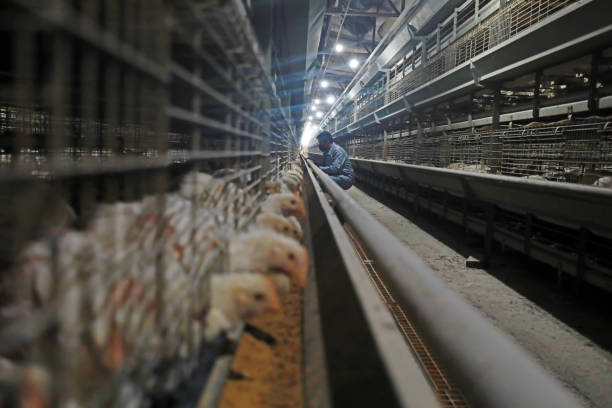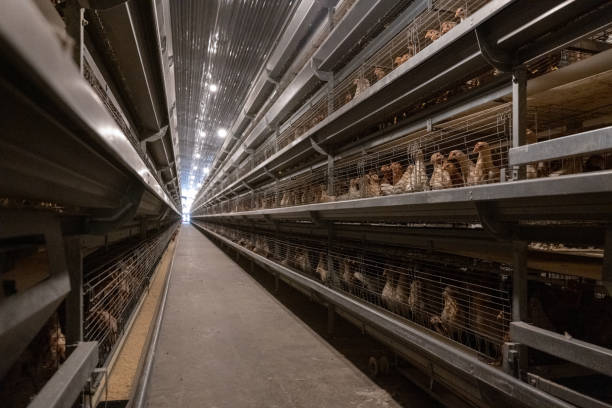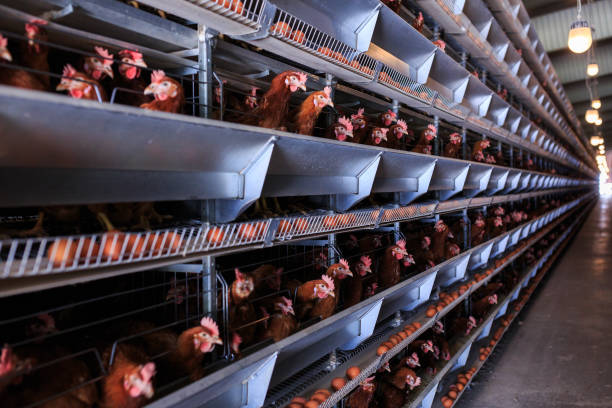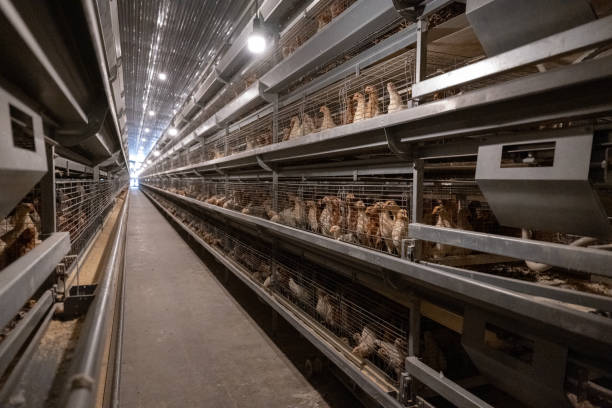
Complete Guide to Building a Poultry Farm
Complete Guide to Building a Poultry Farm
Starting a poultry farm can be one of the most rewarding agricultural ventures—if you do it right. Whether you’re raising broilers, layers, or chicks, building a successful poultry operation requires careful planning, quality equipment, and a solid understanding of modern farming practices. At Zhengzhou Livi Machinery Manufacturing Co., Ltd., we’ve helped thousands of farmers around the world set up efficient, high-yield poultry farms since 2012. In this comprehensive guide, we’ll walk you through every step—from choosing the right location to selecting smart farming equipment—so you can build a poultry farm that’s not only productive but also sustainable and scalable.
Choosing the Right Location and Layout for Your Farm
The success of your poultry farm starts with the right location. You might think any open land will do, but in reality, several key factors should influence your decision. First, consider accessibility. Your farm should be close enough to major roads for easy transportation of feed, chicks, and eggs or meat to market, but far enough from residential areas to minimize noise complaints and biosecurity risks. Good drainage is another must—avoid low-lying areas where water pools after rain, as damp conditions increase disease risk and damage infrastructure.
Next, think about climate. While modern poultry housing systems can control temperature and ventilation, extreme weather can still impact your operating costs. For example, farms in very hot regions may need stronger cooling systems, while cold areas require extra insulation and heating during winter. If possible, pick a site with natural windbreaks like trees or hills to help manage airflow across the farm.
Once you’ve secured the land, design your farm layout strategically. Most successful operations follow a clean-to-dirty flow: keep hatcheries and chick-receiving areas at one end (clean zones), and place manure storage, dead bird disposal, and delivery docks on the opposite side (dirty zones). This reduces cross-contamination. You’ll also need space for multiple chicken houses, feed storage, water tanks, egg collection rooms (for layer farms), and staff facilities. A well-thought-out layout saves labor, improves biosecurity, and makes daily operations smoother.
Selecting the Right Equipment for Efficiency and Growth
No matter how perfect your location is, your farm’s productivity depends largely on the equipment you use. Investing in high-quality, automated systems from day one pays off in the long run by reducing labor costs and minimizing losses. Let’s break down the essential components:
Chicken cages are the backbone of any modern poultry house. For layer farms, layer cage systems allow for better egg collection, lower stress levels in birds, and easier sanitation. Broiler farms often use floor systems, but using raised platform cages can improve air circulation and reduce footpad issues. Chicks are usually raised in brooder cages, which provide warmth, safety, and proper feeding space during their first few weeks.
Automation is where real efficiency kicks in. Modern systems include automatic feeding lines that evenly distribute feed across all sections, minimizing waste and competition among birds. Automatic watering systems—either nipple-based or cup drinkers—ensure fresh, clean water is always available, which is crucial for health and growth. Then there’s manure removal: automatic scraper systems not only keep the house cleaner but also reduce ammonia buildup, helping birds breathe easier and grow faster.
Don’t forget the environment inside the house. Tunnel ventilation systems with cooling pads work wonders in hot climates, while fan-and-inlet setups maintain airflow in moderate areas. Add in temperature sensors and controllers, and you’ve got a smart poultry house that adjusts conditions automatically based on real-time data. At Livi Machinery, our full-range solutions include integrated control panels that let you monitor and adjust everything from your phone—making management simple no matter how many houses you operate.
Health, Hygiene, and Daily Management Practices
Even with the best setup, your farm won’t succeed without strong daily management. Biosecurity should be your top priority. Limit who enters the farm, require workers to wear protective clothing, and install footbaths at house entrances. Vehicles should be disinfected before entering, especially feed trucks. Also, avoid visiting other poultry farms before coming to yours—cross-contamination spreads quickly.
Cleaning and disinfection between flocks are non-negotiable. After each cycle, remove all manure, wash down walls and equipment with pressure hoses, then apply approved disinfectants. Let the house dry completely before introducing new birds. This breaks the disease cycle and gives your next flock a clean start.
Feeding and watering schedules should be consistent. Young chicks need frequent access to feed and water, while older birds thrive on scheduled meals to prevent obesity and ensure even growth. Monitor feed conversion ratio (FCR) regularly—it tells you how efficiently your birds are turning feed into body weight or eggs. A sudden spike in FCR could signal health or environmental problems.
Keep an eye on bird behavior too. Healthy chickens are active, alert, and have shiny feathers. If you notice lethargy, labored breathing, or reduced appetite, investigate immediately. Early detection prevents outbreaks. Regular vaccination and deworming programs—under vet guidance—are essential, especially if you’re in an area prone to Newcastle disease or avian influenza.
Planning for Scale and Long-Term Success
One common mistake new farmers make is building too small, then realizing they can’t expand easily. When planning your initial setup, design with future growth in mind. Can you add another house later? Is your feed storage large enough to support double the flock size? Will your water supply hold up? It’s smarter to slightly over-invest in infrastructure early than to scramble later.
Also consider value-added opportunities. Egg washing and grading machines can help you sell packed eggs directly to stores or markets. Small-scale incubators allow you to hatch your own chicks instead of buying them, cutting dependency on suppliers. Some farms even add biogas plants to turn manure into energy—turning waste into profit.
At Livi Machinery, we don’t just sell equipment—we offer full support from blueprint to operation. Our team can help you choose the right cage system, calculate house dimensions, recommend automation levels, and even assist with installation. We’ve worked with farms in Africa, Southeast Asia, South America, and Eastern Europe, adapting our solutions to different climates and needs. Whether you’re starting small or launching a commercial operation, we’ll help you get it right.
If you’re serious about building a high-performing poultry farm, now is the time to connect. Share your project details—number of birds, type of production, location—and we’ll send you a customized plan including layout suggestions, equipment list, and budget estimate. Let’s turn your vision into a thriving reality. Just leave your name and contact info below, and one of our experts will reach out within 24 hours.
Frequently Asked Questions
What is the ideal size for a poultry house?
It depends on your goals, but most commercial operations use houses between 80 to 150 meters long and 12 to 18 meters wide. This allows housing 5,000 to over 20,000 birds per house when using cage systems. Smaller farms can start with 30×10 meter houses.
How much does it cost to build a poultry farm?
Startup costs vary widely based on scale and automation level. A basic 5,000-bird layer farm might cost $15,000–$25,000 USD, while fully automated systems for 20,000+ birds can range from $60,000 to $100,000+. Equipment quality, location, and labor affect pricing.
Can I use solar power for my poultry farm?
Yes—and it’s becoming more popular. Solar can run fans, lights, and controllers, reducing electricity bills. Pair it with battery backups for reliability, especially in areas with unstable grids.
How often should I clean the chicken coops?

Daily removal of wet litter and spilled feed helps, but full cleaning and disinfection should happen between flocks—typically every 4 to 6 weeks for broilers, longer for layers.

What type of chicken cage is best for laying hens?
Three-tier or four-tier layer cages with automatic egg collection belts are most efficient. They save space, protect eggs from breaking, and make harvesting fast and clean.
Do I need veterinary support to run a poultry farm?
While you can handle basic care yourself, having a local vet or poultry specialist on call is highly recommended—especially during chick arrival and seasonal health challenges.
How do I prevent diseases in my flock?

Focus on biosecurity: limit visitors, disinfect regularly, vaccinate on schedule, provide clean water and quality feed, and isolate sick birds immediately.
Is it better to raise chickens in cages or on the floor?
Cages generally offer better disease control, higher stocking density, easier manure management, and improved uniformity. Floor systems require more labor and carry higher health risks if not managed well.
Can I automate a small poultry farm?
Absolutely. Even small farms benefit from automatic feeders and drinkers. As labor costs rise, automation quickly pays for itself—even at modest scales.
How long does it take to see profits from a poultry farm?
Broiler farms can see returns in 6–8 weeks per cycle. Layer farms take longer—around 5–6 months to first egg—but generate income for over a year. Proper planning and low mortality speed up profitability.
